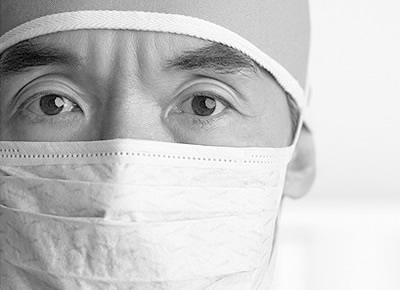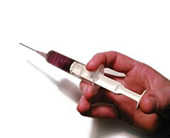-
Bosscher Foundation Live!
The new website is finally live Bosscher Foundation.Read more...
The Articaine Problem - Professionals
At the beginning of the 90's, Marthe Bosscher came across a relatively large number of patients in her electro-acupuncture and natural-healing practice, who were suffering from health problems, attributed for the most part to amalgam dental fillings. This was easily detected using the Dr Voll method of electro-acupuncture measurement. After diagnosing these symptoms, patients were advised to have their amalgam fillings replaced with less toxic alternatives and to contact their dentist.Alongside this advice, patients underwent a homeopathic detoxification program. The aim of removing the filling was to stop the chronic poisoning of the body, while the detoxification program was designed to accelerate the elimination of amalgam already accumulated in the body. For a long while, this two-track approach had much success in treating patients with amalgam problems.
In 1994 however, the results began to become less successful. After having been initially declared cured, a number of patients became ill again, weeks or sometimes months, and more seriously than before. The external symptoms were tiredness, food intolerances and allergies, and a general feeling of fatigue. The cause was unknown.
EAV readings shed no light on the matter. Besides the return of patients who had been symptom free for long periods, it seemed that the amalgam replacements were becoming less successful or even counterproductive.
Meanwhile, Marthe Bosscher began research into the possible causes of the sudden failure of her therapy that had been working so successfully for many years. During her research, she concentrated her attention mainly on the materials used during dental procedures.
Finally, in April/May 1995, it became clear that those who were suffering from relapse had been exposed to relatively high doses of articaine within a short period, in contrast to those cases that had remained symptom free. The symptom free group appeared to have been treated with other local anesthetics, but not with articaine. EAV measurements confirmed the suspicion that articaine had accumulated in this group of patients. Once the cause had been determined, work was then started on the development of a new therapy. This new therapy has proven successful with the more recent cases. For patients exposed longer ago to articaine, this has proven more difficult, where chronic articaine accumulation has caused long-term damage to nerve functions, in particular the central nervous system.
The cause of this form of neural intoxication is, in our opinion, the use of articaine on patients with butyrylcholinesterase deficiency (BuChE dfc). It is noteworthy, that since 12th July 1995 articaine carries a contraindication for this complication.
"Ultracain may not be administered to patients with cholinesterase deficiency, unless there are strict indications for its use. This is due to a possible prolonged working effect of Ultracain in these patients and in some cases extremely strong effects".
The hypothesis concerning this problem reads as follows:
According to existing literature (1), the administered articaine is hydrolyzed into articainic acid, an inactive metabolite (2), under the influence of the enzyme butyrylcholinesterase. Thereafter the articainic acid is geglucuronidized (partly) into articaineglucuronic acid in the liver. This acid is sufficiently water-soluble and can be excreted through the kidneys. Articaine administered to patients with BuChE dfc. is at best only partially hydrolyzed (depending on the degree of deficiency) and partially broken down by other alternative means. How this proposed alternative method of metabolism takes place is currently the subject of research. It is conjectured that incomplete decomposition of the articaine (hydrolysis) leads to one of two possibilities. It should be noted that one form of decomposition does not exclude the possibility of the occurrence of the other.
One means of metabolizing articaine causes the articaine to act as a cholinesterase retardant and shows characteristics similar to the effects of the poisoning caused by an insecticide used in the 60's and 70's. The effects of which, on cholinerge transmission, are typical - paresthesia, paralysis and disrupted proprio reception.
The second means of metabolizing articaine leads to oxidation of the nitrogen atom whereby a nitrohyrdroxylamine is formed. (See footnotes referring to this metabolic process). This substance is an active mutagen and can directly react with cell DNA without the presence of any enzyme for this reaction. As such, it can later act as a carcinogen. It is possible that this means of metabolizing articaine is responsible for the growing numbers of cancer patients amongst the articaine victims known to the Bosscher Foundation. This form of chemical carcinogenisis is most prevalent in the kidneys, prostrate and breast. Leading scientists confirm that this is a possible explanation for the mentioned complaints. Further research will shed more light on this matter.
It is difficult, if not impossible, for dentists or dental surgeons to recognize these risk groups, because BuChE dfc. Must be clinically measured and is not identifiable as an objective, pathological characteristic. Therefore we shall attempt to define the risk groups more clearly.
Which Groups are (Potentially) BuChE-deficient?
Among Caucasians (3), approximately 4% have BuChE-deficiency. This group has a genetic defect in certain enzymes. Apart from this group, there is a large group of people that come into contact with certain substances that can cause liver damage, either in the course of their work or profession, or otherwise. Agricultural workers using organic phosphor compounds and organic phosphates (insecticides and herbicides), painters (solvents in paints) and upholsterers (solvents in glues) form a group where liver damage is common. People with cadmium, lead, mercury or other heavy metal poisoning also belong to this risk group, as well as people with amalgam fillings. Other risk groups include those with other forms of liver damage due to alcohol and drug use. All these people run the risk of a BuChE-deficiency that can cause articaine not to be broken down in an optimal manner.
Articaine is unique among amide-type local anesthetics in the way that it is metabolized. Nearly all amide-type local anesthetics are metabolized by the liver and then for the most part excreted through the renal system. Articaine, however, is primarily metabolized in the plasma and then further broken down in the liver. Articaine has a common contraindication to other substances that metabolize in a similar fashion, predominantly various types of muscle relaxants. In contrast to articaine, these other substances are only administered in hospitals, either pre and post-operatively, where immediate action can be taken in the event that BuChE dfc. effects arise. This is not possible at a dental practice.
Given the current situation, the Bosscher Foundation strongly advises against the use of articaine as long as the patient has not been tested for any form of BuChE dfc.
Prilocaine is also discouraged because extra dosages are often administered to achieve the desired level of anesthesia for the patient. This leaves lidocaine, with or without adrenaline. This substance may be slower to take effect and has a lower degree of bone penetration than articaine, but it exhibits none of the "surprising" side effects of articaine. Furthermore, Ultracain™ and Septanest™ also contain adrenaline, which is also contraindicated for other medical risk groups. The necessity of using a preservative in combination with adrenaline to prevent oxidation of the adrenaline should also be carefully evaluated, because sulfite compounds in preservatives are often the cause of allergic reactions.
Click here for the chemical structure of
articaine, articainic acid and N-hydroxylamine
References:
(1) Local Anaesthesia in Dentistry Today. Hoechst AG. 1990, 13-30
Pharmacology of Articaine and of Vasoconstrictive Additives, U. Borchard.
(2) Pharmacokinetics, Metabolism and Renal Excretion of Articaine and its Metabolite Articainic Acid in Patients after Epidural Administration, European Journal of Anaesthesiology, Aug. 1988, 49-56, Van Oss e.a.
(3) Prevalence of Congenital Deficiency in Serum Cholinesterase, Archives of Environmental Health, 1997 Jan/Feb, 42-44, Rosenman K.D. and Guss P.S.
Appeal
As you have read there are a number of unresolved questions relating to the articaine problem. Since Aventis still refuses to help us with these questions, we are requesting the help of biochemists and toxicologists. You can contact us by email or by calling +31 (0)181 404050.
Discretion is guaranteed.

 NL
NL  EN
EN  DE
DE 
